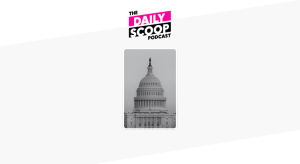On Dec. 2, website traffic on healthcare.gov doubled, launching an upward trend the Centers for Medicaid and Medicare Services anticipates will continue. In a press call Monday, Julie Bataille, director of communications at CMS, said now that the site’s many technical bugs have been fixed, traffic is expected to grow.
“As of noon today, the site has had 375,000 visitors, between the hours of midnight and noon,” Bataille said.
These numbers exceed what is usually seen during the peak hours on a Monday, Bataille pointed out in the call. Sunday’s site traffic was also radically more than usual for a weekend and a holiday weekend no less.
At 10 a.m. today, the healthcare.gov team deployed a new queuing process meant to improve user experience. The decision to move forward with the feature today was made after seeing numbers and error rate while doing real-time monitoring of the site.
After a site launch described by many as a failure, CMS issued Sunday a progress and performance report. According to a CMS release, experts across the government and the private sector made the assessment.
The review connected the main issues back to hundreds of software bugs, insufficient software and infrastructure with the site. In October, the site was down 60 percent of time, according to the report.
However, during the past five weeks the site has seen substantial progress and the bugs and glitches responsible for user flaws have been corrected, the report said. Improvements include: stable site capacity at its intended level, as well as hundreds of software fixes and hardware upgrades. These fixes, the report said, have led to greatly improved operating metrics and activity levels. The site has seen steady progress in removing bug and software fixes, most noticeably starting Nov. 9 when the number of bugs removed increased significantly.
“While there is more work to be done, the team is operating with private sector velocity and effectiveness, and will continue their work to improve and enhance the website in the weeks and months ahead,” the report said.
The site has been monitored in real-time 24/7, and an open bridge for instant incident response has been established. Individuals involved with healthcare.gov have participated in stand-up “war room” meetings twice a day. There have also been daily feedback sessions from those participating in the direct enrollment pilot, and Bataille said feedback since the weekend has been generally positive.
Response time has also decreased significantly since the site’s Oct. 1 debut, down to under 1 second on average. Based on usage trends, the site can expect more than 800,000 consumer visits per day, the report concluded.
The report describes the progress as “dramatic”; the error rating is below 1 percent and the site can support 50,000 users simultaneously.
“As the metrics detailed in this report reveal, dramatic progress has been made on improving healthcare.gov,” the report stated.






